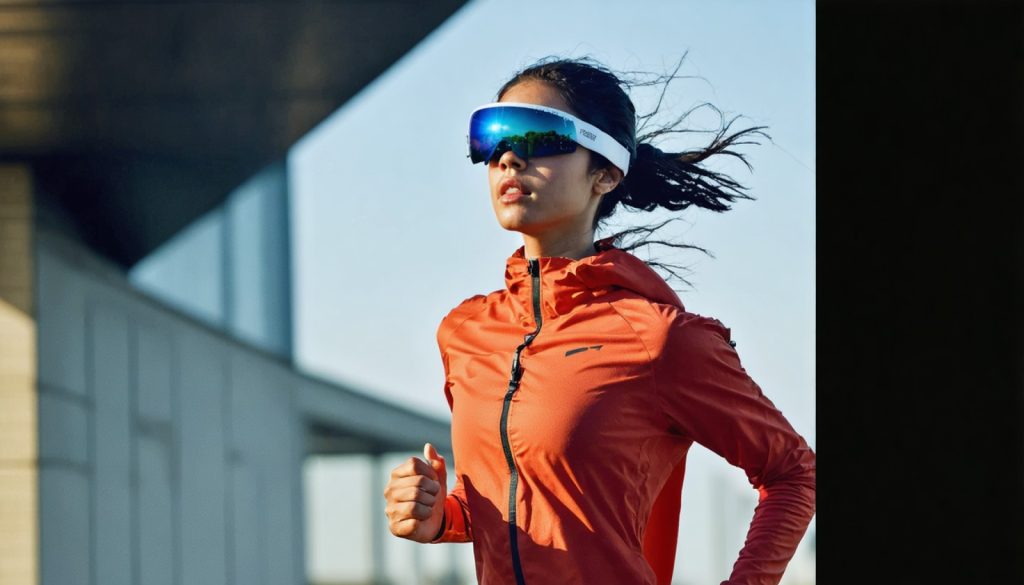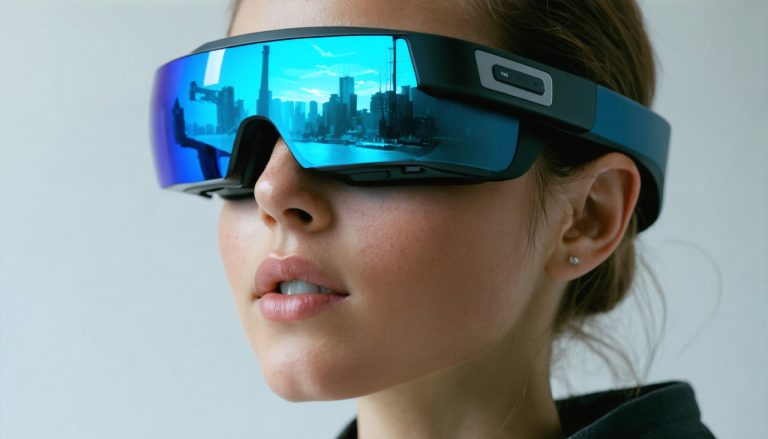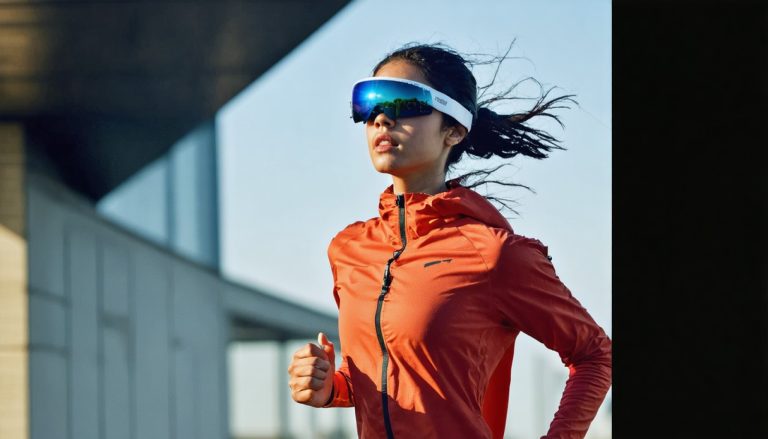
- AR glasses revolutionize fitness by providing real-time data without breaking pace.
- The ENGO 2 AR glasses exemplify this trend, offering lightweight design but limited features.
- Despite software and visibility issues, ENGO 2 show promise for cyclists needing unobstructed views.
- Future iterations may include sensory inputs and gesture controls, enhancing usability for athletes.
- Companies like Meta, Google, and Samsung are exploring advanced AR features such as heart rate monitoring and navigational overlays.
- The evolution of AR in fitness could make these tools essential, offering immersive and dynamic performance insights.
Imagine pounding the pavement, your feet rhythmically hitting the ground, eyes fixed on the road ahead. But now, starkly different from just a few years ago, there’s a futuristic sheen to this familiar routine. Lightweight augmented reality (AR) glasses rest comfortably on your nose, projecting real-time data into your field of vision. Your pace, heart rate, and power output appear subtly in your peripheral view—without diverting your eyes from the path.
In the world of fitness technology, the rise of AR glasses marks an intriguing evolution. Designed for athletes who prefer an uninterrupted stride to a wristwatch glance, these high-tech wearables push the boundaries of what’s possible with fitness feedback.
Recently, a particularly innovative pair, the ENGO 2 AR glasses, provided a glimpse into what’s on the horizon. While they’re far from perfect, with issues around visibility and software still to be refined, their very existence signals an exciting trend. Imagine a device offering full-day battery life and feather-like weight, avoiding the bulkiness typical of past AR attempts. However, these ENGO glasses are not equipped with features like cameras or AI assistants. Their simplicity is their strength and their limitation, relying on other devices to function.
Despite these constraints, the ENGO 2 shows promise, impressively optimized for minimal weight at just over an ounce. This quality makes them ideal for cyclists who can’t afford to look away from their route. But for runners, the challenge remains: these glasses often slide down the nose, with the bulk of their technology concentrated in one spot, partially obstructing vision.
Future iterations of such technology, though, are likely to integrate multiple sensory inputs. Picture using subtle finger gestures to cycle through metrics or making mid-run adjustments with ease. Giants like Meta, Google, and Samsung are exploring these avenues vigorously. Meta’s anticipated Oakley smart glasses hint at a future where AR technology supports performance with real-time heart rate monitoring, capturing not just data but dynamic images and experiences of the run.
Furthermore, Google’s ventures into Project Haean, aiming to deliver a lightweight and sophisticated holographic experience, could redefine how athletes perceive their performance. The potential to overlay navigational cues on a trail run, seamlessly integrated through Google or Samsung’s health ecosystem, is tantalizing.
Consider this pivotal question: Will future athletes regard these AR tools as essential gear, or will watches and traditional devices remain the go-to? The promise of unparalleled, in-the-moment data relay could just tip the scales.
For now, dreams of smartwear bringing the thrill of sci-fi into the everyday are within grasp. As the technology matures, your next run might be more than personal bests and persistent miles. It could, quite literally, be a vision of the future.
How AR Glasses Are Revolutionizing Fitness Tech: The Future is Now
The Rise of Augmented Reality in Fitness
In recent years, augmented reality (AR) glasses have emerged as a cutting-edge technology with the potential to transform the fitness landscape. Moving beyond the traditional wristwatch or smartphone, these glasses offer athletes a seamless, heads-up display of critical performance metrics. Lightweight and designed for continuous wear, AR glasses like the ENGO 2 provide real-time insights into pace, heart rate, and power output—directly in the wearer’s field of vision.
Key Features and Current Limitations
Features of ENGO 2 AR Glasses:
– Lightweight Design: Weighing just over an ounce, these glasses offer comfort for extended use.
– Display Metrics: Real-time performance data is displayed non-intrusively.
– Battery Life: Designed for all-day use to support long training sessions.
Limitations:
– Visibility Issues: The concentration of tech in specific areas can obstruct vision.
– Movement During Activity: Glasses may slide down the nose during activities like running.
– Lack of Integrated Features: No camera or AI assistant currently included.
Market Trends and Forecasts
As major tech players like Meta, Google, and Samsung invest heavily in AR technologies, the market is poised for significant evolution. Meta’s partnership with Oakley points towards integrating AR with apparel brands, while Google’s Project Haean suggests ambitions for wearable holography. The industry is expected to grow rapidly, with applications in navigation, performance analytics, and immersive experiences.
Innovations on the Horizon
Future advancements in AR glasses could include:
– Enhanced Gesture Controls: Allowing users to manipulate data displays with subtle movements.
– AI Integration: Providing personalized coaching and real-time feedback through AI-driven analytics.
– Improved Wearability: Innovations that prevent slippage and enhance comfort during high-movement sports.
Pros and Cons Overview
Pros:
– Hands-free access to information.
– Light, minimalistic design.
– Opportunity for continuous feedback without distraction.
Cons:
– Higher cost compared to traditional fitness devices.
– Potential for visual obstruction.
– Dependence on connected devices for full functionality.
E-E-A-T Considerations
Ensuring Expertise, Experience, Authoritativeness, and Trustworthiness (E-E-A-T), feedback from professional athletes and tech testers is critical. Athletes’ experiences with AR glasses could drive design improvements and adoption rates.
Actionable Tips
– Try Before You Buy: Test AR glasses during a short run or training to assess comfort and visibility.
– Focus on Fit: Choose models that offer customization for different face shapes to prevent slipping.
– Stay Updated: Follow industry announcements for updates on emerging features and collaborations.
Final Thoughts
While current AR glasses like the ENGO 2 offer a tantalizing glimpse into the future of fitness tech, the real revolution lies in emerging capabilities that immersive AR can bring. Whether you’re an athlete aiming for personal records or someone looking to enhance your workout experience, AR technology holds promise. As these tools become more advanced and accessible, your training routine might just leap into a new dimension.
For more on emerging technologies, visit the main sites of leading companies in the space like Meta, Google, and Samsung.



